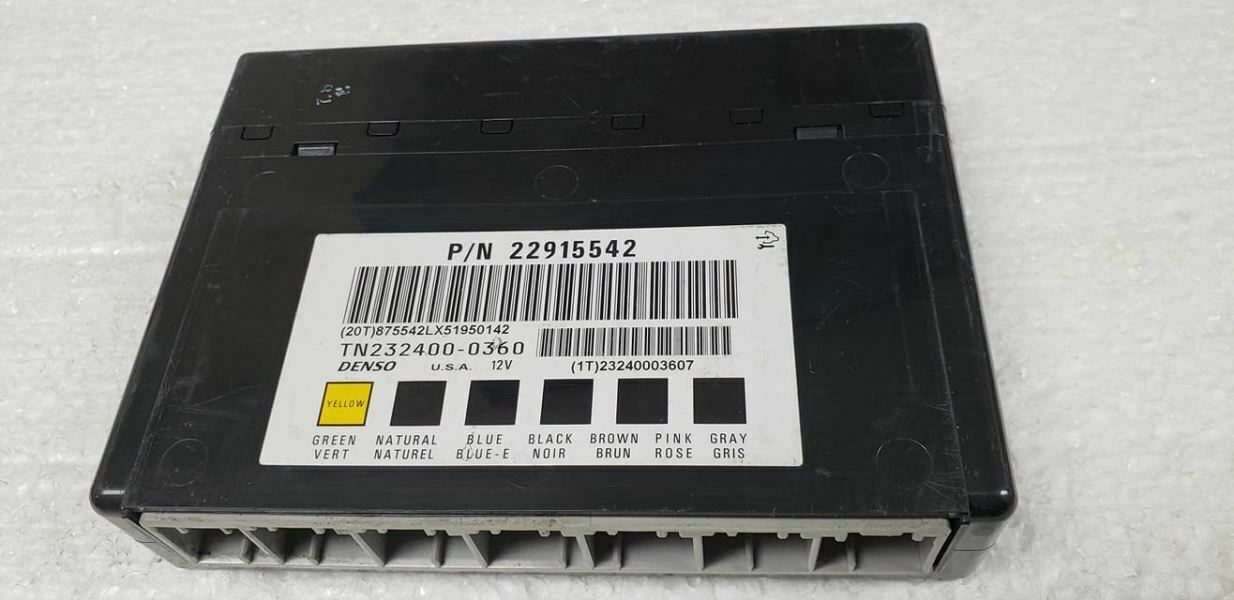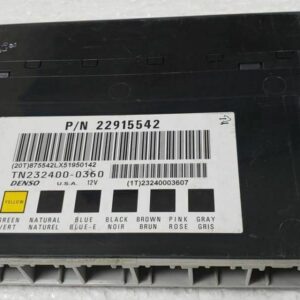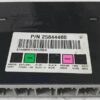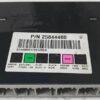Restore Your Vehicle’s Electrical Stability
Are you dealing with baffling electrical issues in your GM vehicle? Flickering dashboard lights, power windows with a mind of their own, or a security system that prevents your car from starting can all point to one culprit: a failing Body Control Module (BCM). As an experienced technician, I’ve seen firsthand how a faulty BCM can turn a reliable vehicle into a source of daily frustration. It’s the central command center for your car’s comfort and convenience features, and when it fails, chaos ensues.
This isn’t just a replacement part; it’s a complete, ready-to-install solution. We take the hassle and high cost of dealership visits out of the equation. Simply provide us with your vehicle’s VIN during checkout, and our experts will program this Programmed Body Control Module with the latest GM software updates specific to your car. It arrives at your door ready to be installed, restoring the precise functionality you’ve been missing.
A Technician’s Notebook: The 2016 Traverse with a Ghost
A customer brought in a 2016 Chevy Traverse with a list of strange symptoms: the radio would cut out, the dash lights would flicker, and occasionally the door locks would cycle on their own. They were convinced it was haunted. My scan tool pulled a U0140 code—Lost Communication With Body Control Module. After verifying solid power and ground at the BCM connector, it was clear the module itself was failing internally. Instead of a costly trip to the dealer, we ordered a VIN-programmed BCM. The installation took less than 30 minutes, and every single electrical gremlin vanished. This is the exact, reliable fix that gets vehicles back to 100% without the dealership headache.
Common Signs of a Failing GM BCM
If you’re experiencing any of the following, a faulty BCM is the likely cause. This Programmed Body Control Module is designed to correct these exact problems:
- ✔ Unresponsive or erratic power windows, mirrors, and door locks.
- ✔ The horn or security alarm sounding without reason.
- ✔ Warning lights for the airbag, ABS, or traction control (StabiliTrak) appearing on the dash.
- ✔ Instrument cluster gauges behaving erratically or going completely dark.
- ✔ A no-start or no-crank condition due to the anti-theft system not recognizing your key.
- ✔ Interior or exterior lights not working correctly (e.g., staying on or not turning on at all).
- ✔ Communication error codes like U0140 stored in other modules.
A Straightforward Guide to BCM Installation
For the confident DIYer or professional mechanic, installing this module is a manageable job. Since the programming is already done, you can focus on the physical replacement.
- Safety First: Always disconnect the negative terminal from your vehicle’s battery and wait a few minutes before beginning work.
- Locate the BCM: On most compatible models, the BCM is located under the driver’s side of the dashboard (LH dash) or behind the center dash panel. Refer to a service manual for your specific vehicle’s location.
- Disconnect the Module: Carefully unplug all electrical connectors. Most have a locking tab that needs to be depressed or lifted to release the plug. Do not force them.
- Remove the Old BCM: Unbolt or unclip the old module from its mounting bracket and remove it from the vehicle.
- Install the New BCM: Mount your new, pre-programmed BCM in the same location and secure it.
- Reconnect and Test: Plug all electrical connectors back into the new module firmly. Reconnect the battery terminal. Turn the key to the ‘On’ position and test all body functions (lights, windows, locks, etc.).
Important Post-Installation Steps
After installation, some vehicles may require one or more relearn procedures for full system integration. This is a normal part of replacing a major electronic module. Key procedures can include:
- ✔ Airbag System Sync: If the airbag warning light is illuminated after installation, a professional scan tool is needed to perform the ‘Setup SDM Primary Key in BCM’ procedure. This syncs the new BCM with the airbag system.
- ✔ Brake Pedal Position Relearn: On some models, a brake pedal position sensor recalibration might be necessary to ensure correct brake light operation and to prevent issues with the traction control system.
Disclaimer: Vehicle systems vary. Always consult a factory service manual or a qualified technician for procedures specific to your make and model.
Verified Vehicle Compatibility List
This Programmed Body Control Module is a direct replacement for part numbers 22820314 and 22915542. It is guaranteed to fit the following vehicles:
- ✔ Acadia: 2013-2016
- ✔ Acadia Limited: 2017 (VIN J, 11th digit)
- ✔ Captiva Sport: 2013-2015
- ✔ CTS: 2014 (SW & V-Series Sdn), 2014-2015 (Cpe)
- ✔ Enclave: 2013-2017
- ✔ Express Van 1500/2500/3500: 2013-2018
- ✔ Impala: 2013
- ✔ Impala Limited: 2014-2016 (VIN W, 4th digit)
- ✔ Savana Van 1500/2500/3500: 2013-2018
- ✔ Traverse: 2013-2017
Frequently Asked Questions
Frequently Asked Questions
Why do you need my VIN?
Your Vehicle Identification Number (VIN) is essential. We use it to load the exact, correct software and calibrations from GM for your specific vehicle’s options and features. This ensures the module works perfectly right out of the box.
Is this part difficult to install myself?
The physical replacement is straightforward for someone with basic mechanical skills. However, be aware that post-installation procedures like an airbag system sync or brake pedal relearn may be required, which necessitate a professional-grade diagnostic tool.
Do I have to return my old BCM?
No. There is absolutely no core charge for this part. You can keep your original module.
What happens if my airbag light turns on after I install it?
This is a normal possibility. It means the new BCM needs to be electronically ‘introduced’ to the airbag control module (SDM). A repair shop with a capable scan tool can perform the ‘Setup SDM Primary Key in BCM’ procedure in a few minutes to resolve this.
Will this fix my check engine light?
A BCM typically controls body electronics, not engine functions. While a faulty BCM can cause a no-start condition, it’s unlikely to be the source of a check engine light unless it’s causing communication faults with the engine computer (ECM/PCM).



